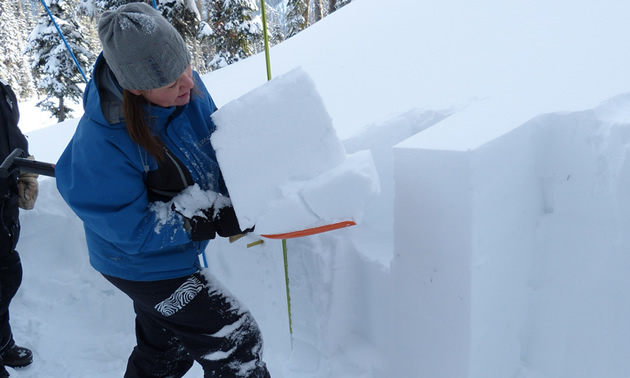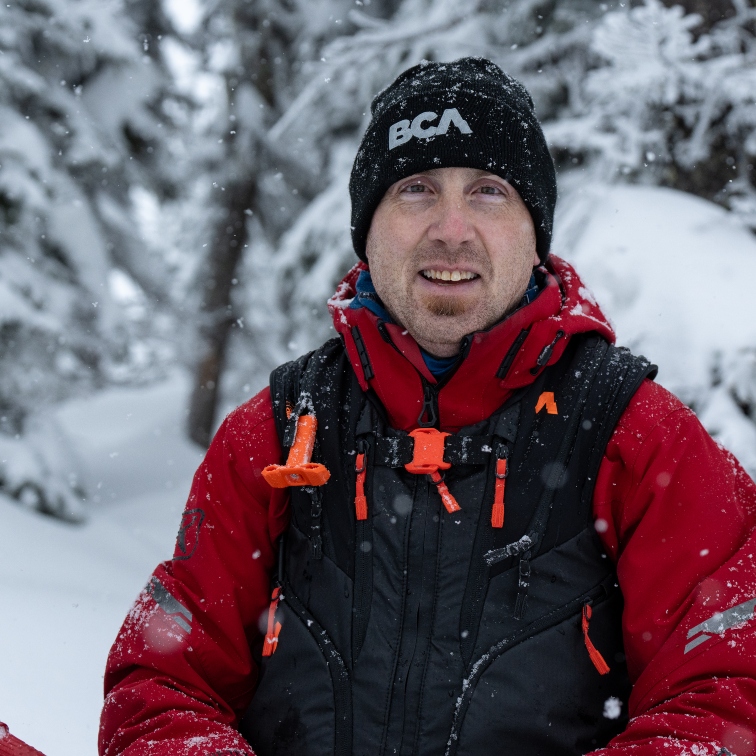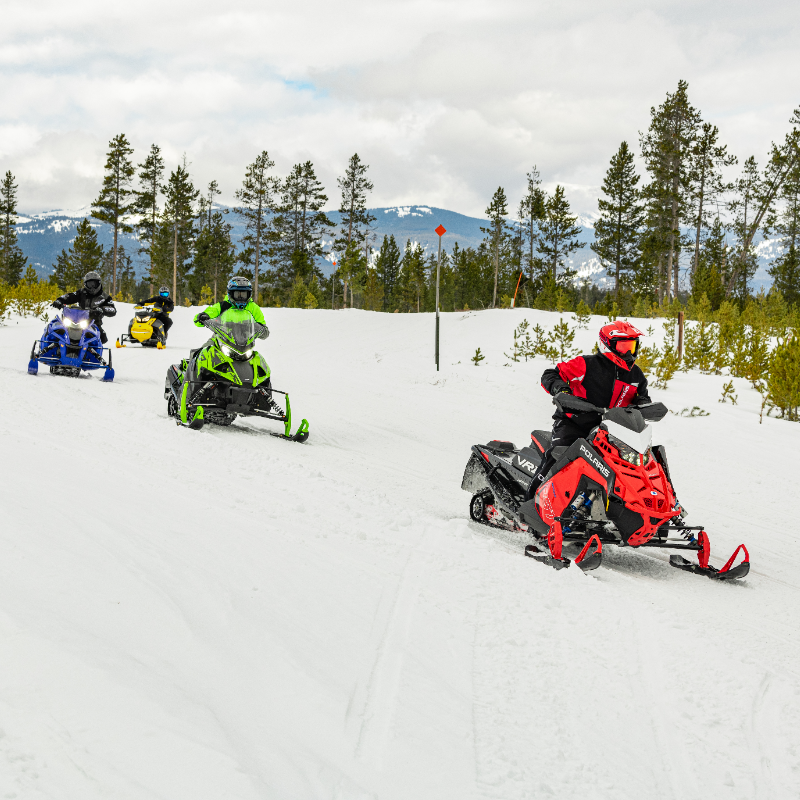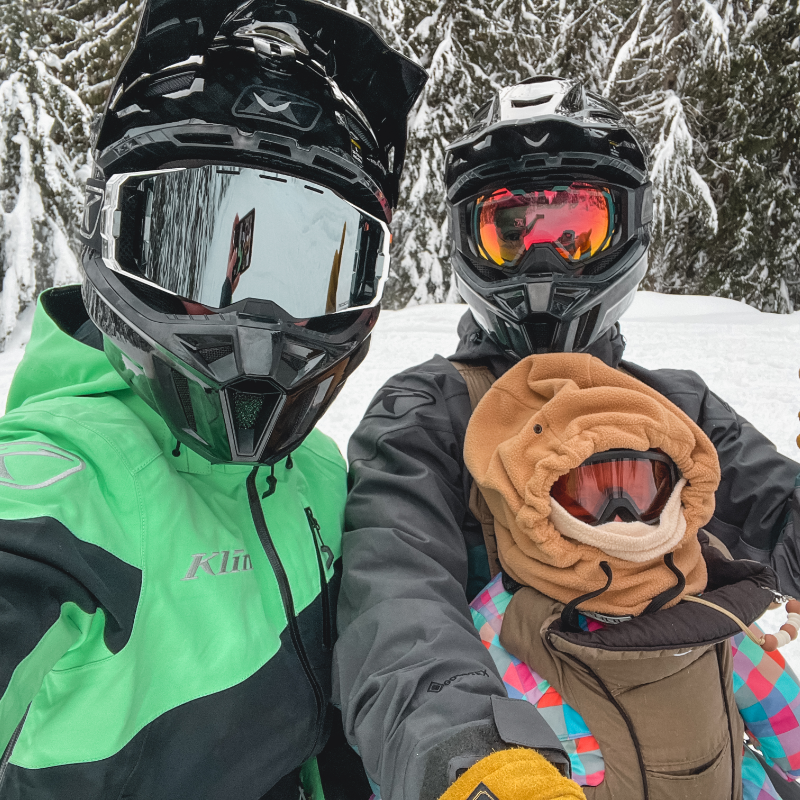“I’ve been sledding in the mountains my whole life—I don’t need avalanche training.”
“I’m not a hillclimber so I’m safe.”
“If I take a course, they will just tell me to stay out of the mountains because they’re too dangerous.”
Have any of those thoughts ever crossed your mind? They did mine. Reality finally hit me when I was interviewing Carole Savage—the snowmobile program co-ordinator for the Canadian Avalanche Centre (CAC). At the end of our conversation, she said, “We don’t know what we don’t know.”
It seemed like a silly saying at the time, but it got me thinking: Do I know what avalanche terrain really is? Do I know how to use my beacon, shovel and probe? I check the avalanche bulletins, but am I interpreting them correctly?
I thought about my sledding partner as well. He is also my husband, and since he is the better rider, I usually let him act as a guide for our group. He may be an experienced mountain sledder, but does he have the necessary skills to make wise terrain choices? And what if he were involved in an avalanche—could I save him?
After an honest self-examination, I decided to sign up for an avalanche safety training course. I contacted Lori Zacaruk of Zac’s Tracs Avalanche Skills Training, based out of Black Diamond, Alberta, and registered for a field and classroom session to get the full Avalanche Skills Training Level 1 accreditation.
My husband, Monte, also signed up with me, and so on January 11, 2013, we headed to Fernie, B.C., for our field session. The rendezvous point was at the Fernie Snowmobile Association’s Coal Creek Staging Area. We met with 21 other sledders who were also taking the course that day. After everyone had unloaded their sleds and got their gear ready, the group met with Lori and Randy Zacaruk.
A pre-trip briefing
Lori gave us an overview of the day ahead and explained what was expected of us in terms of trail etiquette. Together, we read through the CAC’s current avalanche bulletin for the region we were in. Lori also taught us how to gather information from the bulletin and the Avaluator card to rate the current avalanche conditions. At this point, I realized that although I had read the avalanche bulletins before, I was not taking full advantage of this provision. Then we headed up the trail.
Lori stopped us along the way to point out avalanche paths and discuss how snow changes with elevation gains. When we reached our destination, which was a small play area at the end of the trail, the sight of fresh snow lured a few sledders away from the group to make some turns—and they were gently rebuked by Lori when they returned. We were not there to ride.
Listen up, class is in session
We split up into smaller groups and learned how to dig snow pits. I was in Lori’s group and she showed us how to perform a shovel tilt test and a compression test to find and rate weak layers and crystals in the snowpack.
After lunch, we dug out our avalanche gear and Lori inspected our equipment. She explained what type of avalanche equipment is available and how it all works, and then we performed a range test with our beacons. The signal we were searching for was placed in an awkward orientation, so that we could see in the very worst of circumstances how close we would have to be from an avalanche victim before our beacon would start to pick up a signal.
Then we performed a victim search and multiple victim searches with beacons buried under the snow. I felt like a duffer, standing there, not knowing how to use my beacon and the proper search modes. It was eye-opening, indeed, and called into question how prepared we really are to deal with an avalanche situation before we head into the backcountry. Lori showed everyone how their beacons work and stressed that once we knew how to use them, it’s practise, practise, practise.
Shovelling 101
The next activity was shovelling. Most of us know how to shovel snow in our driveway, but it’s a different task altogether when you have to dig through hard-packed snow to unbury a person. And time is your enemy. The chances of survival after a burial time of five minutes is 80 per cent, but after 20 minutes, it drops to 35 per cent. After 35 minutes, the survival rate is only eight per cent—so you had better know how to move snow efficiently and safely.
It is interesting to note that oftentimes, sledders involved in avalanches get buried underneath their snowmobile. The biggest object in an avalanche stays on top, and the smallest—usually a person—gets pushed to the bottom. We learned that it is best to shovel a hole on the downhill side of the victim and that the V-shaped conveyor-belt shovelling technique—which has rescuers positioned in a zigzag formation—is the most efficient for moving snow.
Placed in groups of threes and fours, we had a big race to see which group dug the best hole in the least amount of time. I think our group should’ve received a trophy, but winning was not the object of this game. The goal was for us to see how hard shovelling really is.
Putting the pieces together
Just before the day wrapped up, our instructors organized a mock rescue. Half of the group rode down the trail and buried beacons while the other half did the same at their location. Then we switched. What seemed like a fun exercise actually simulated riding into an avalanche scene and having to go into rescue mode.
Everything we had learned that day—from searching and probing to digging—all came together in a hurry. Even though I knew that nobody was in danger, it was frightening to think that someone’s life could depend on me. Even if those in my group always make wise terrain choices, I may be faced with a real-life situation exactly like this. Then what?
Imagine how rewarding it would be to save a life and bring someone back home to their family because you had the training and knew how to use your gear correctly.
The key, however, is not to get caught in the first place. To read Part 2 of this story, see Avalanche Safety Training: Do You Really Need It? Part 2.
Win a free AST Level 1 Class and Field session (a $350 value) from Zac's Tracs for yourself, a friend or a family member. This offer is exclusive to SnoRiders readers and it applies to upcoming classes that are taking place in Valemount and Fernie, B.C., during the 2013 sledding season.
To qualify, simply register for either of these classes on the Zac's Tracs website and quote SR350 when prompted for a Special Code. One winner will be drawn at each of these classes. The odds of winning are high! Only those students who have registered with the SnoRiders code, however, will be entered into this draw. The life they save may be yours!







